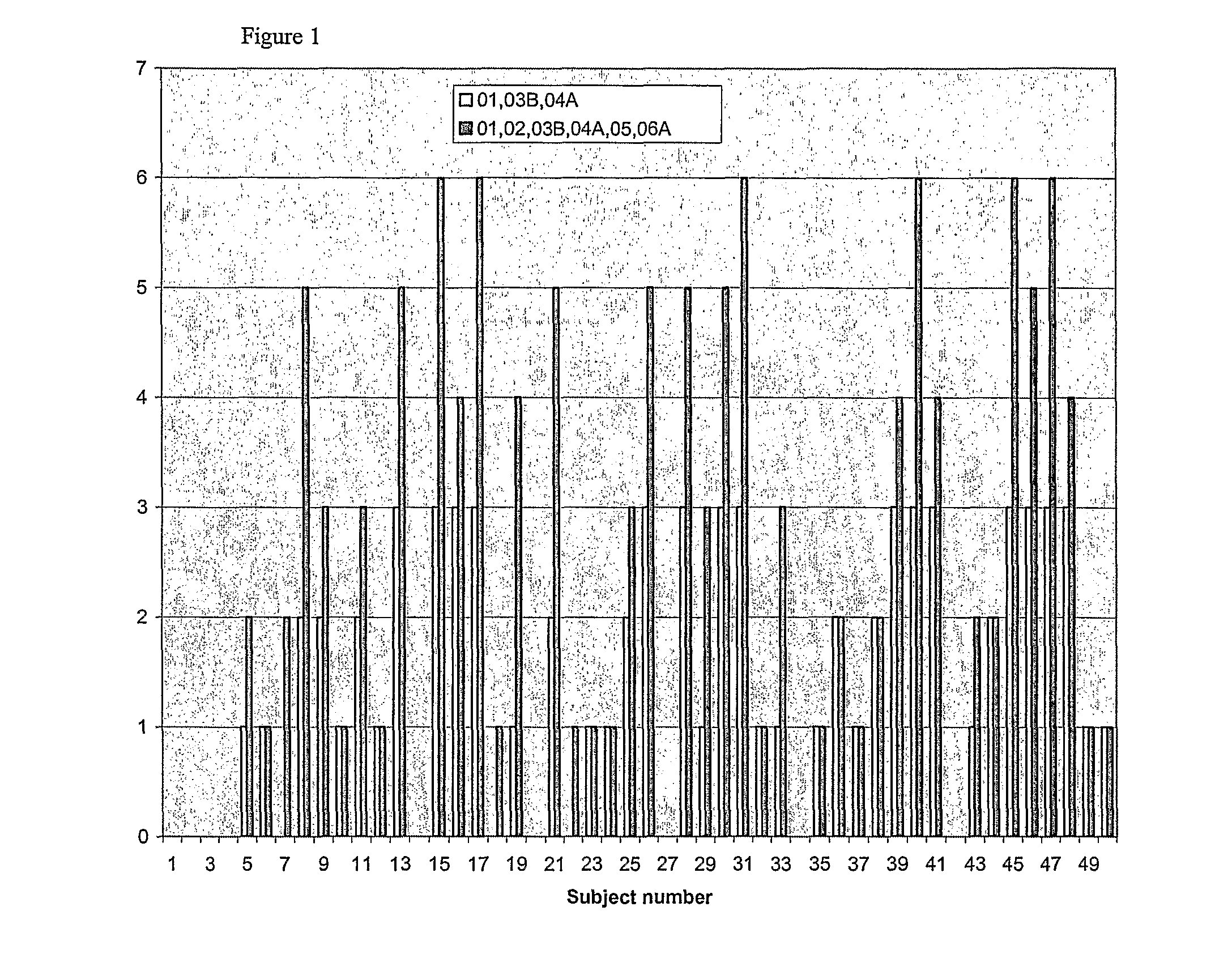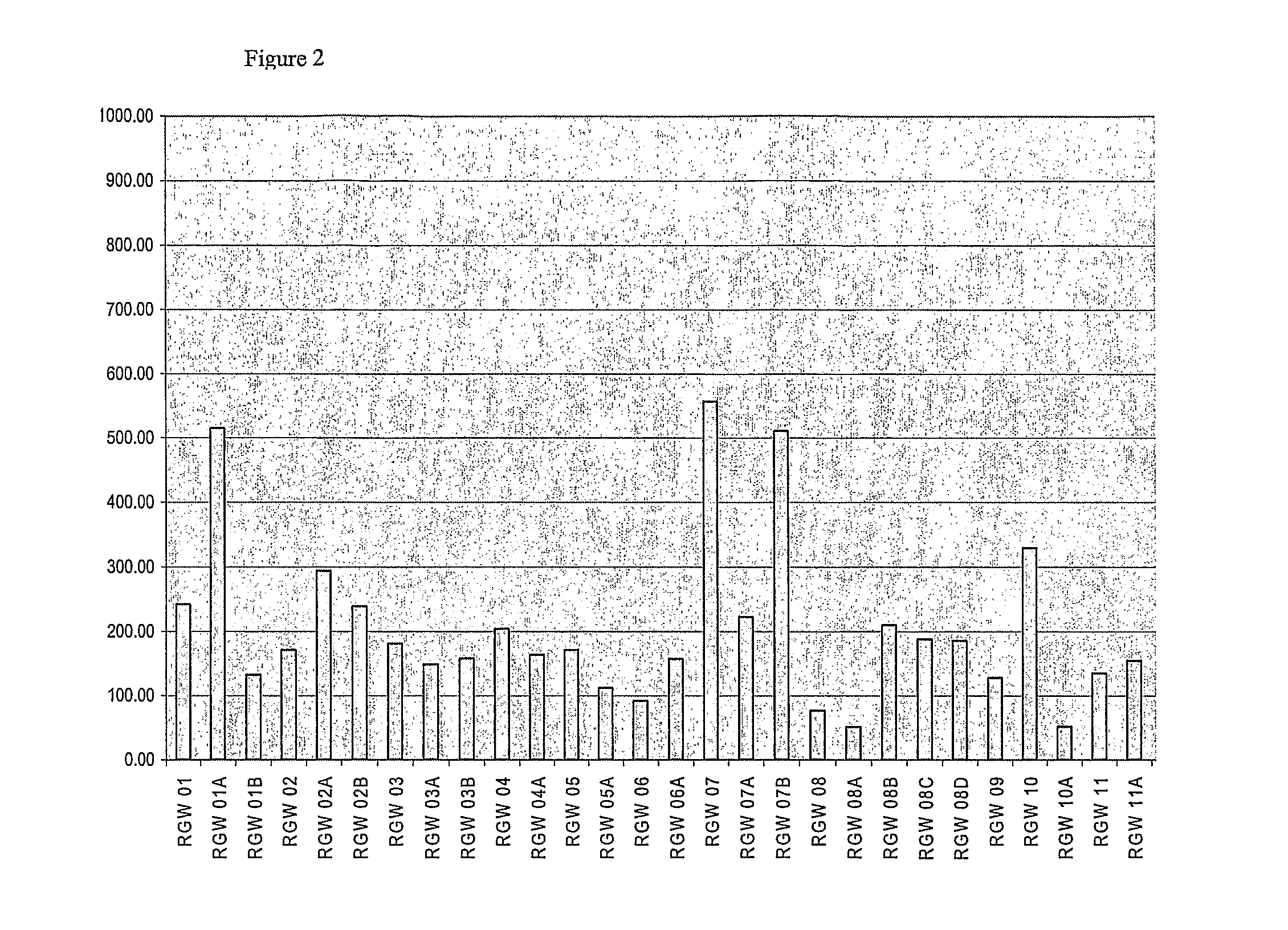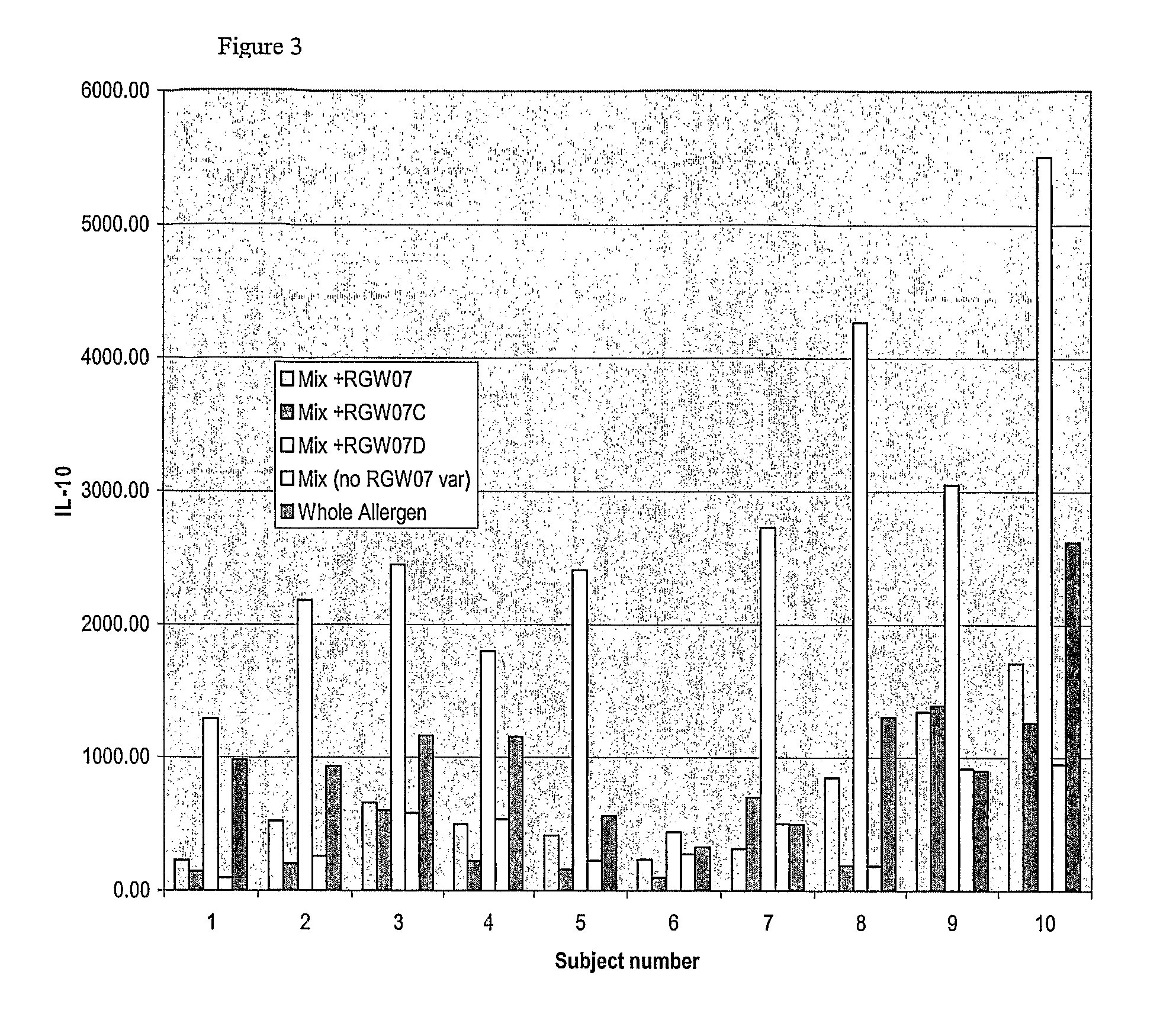Vaccine comprising AMB A 1 peptides for use in the treatment of ragweed allergy
a technology of ragweed and peptides, which is applied in the direction of plant peptides, tripeptide ingredients, tetrapeptide ingredients, etc., can solve the problems of inducing adverse reactions, reducing the safety of use, and reducing the risk of adverse reactions, so as to achieve broad coverage of efficacy and avoid significant histamine release , the effect of broad utility
- Summary
- Abstract
- Description
- Claims
- Application Information
AI Technical Summary
Benefits of technology
Problems solved by technology
Method used
Image
Examples
example 1
Potential T Cell Epitopes
[0215]The regions of Amb a 1 described below were identified as potentially comprising one or more T cell epitopes:
[0216]
TABLE 2RESIDUES INREGION OFAMB A 1INTEREST(isoform 1.3)SEQUENCEA178-189GMIKSNDGPPIL(SEQ ID NO: 32)B202-213GSSQIWIDHCSLSKS(SEQ ID NO: 5)C343-354DKDLLENGAIFVTSGSDPVLTPVQ(SEQ ID NO: 33)D364-375PVQSAGMIPAEPGEA(SEQ ID NO: 34)E103-114EGTLRFAAAQNRPLW(SEQ ID NO: 35)F130-141QELVVNSDKTIDGRGVKVEII(SEQ ID NO: 36)G376-387GEAAIKLTSSAGVFSCHP(SEQ ID NO: 37)H226-237GSTHVTISNCKF(SEQ ID NO: 22)I280-297FGFFQVVNNNYDRWGTYA(SEQ ID NO: 38)J38-48ETRSLQACEALN(SEQ ID NO: 39)
[0217]The sequences provided for regions G, I and J in the priority application, GB 0815258.3 are as follows: GEAAIKLTSSAGVLSCRP (Region G, SEQ ID NO: 40), HGFFQVVNNNYDRGTYA (Region I, SEQ ID NO: 41) and ETRRLTTSGAYN (Region J, SEQ ID NO: 42). These sequences have been corrected in Table 2 such that they correspond to the relevant regions from Amb a 1 isoform 1.3 full length sequence as provided ...
example 2
Histamine Release Assay
[0236]The purpose of this assay was to identify individual peptides that are capable of activating blood basophils (as a surrogate for tissue mast cells) resulting in histamine release that may result in allergic reactions during therapy. Peptides or combinations of peptides that induce histamine release frequently may be considered unsuitable for inclusion in the peptide vaccine.
[0237]Histamine release requires the crosslinking of adjacent specific IgE molecules on the surface of the basophil. The peptides being evaluated were small (11 to 18 amino acids in length) and should not, therefore, possess significant tertiary structure that would enable them to retain the conformation of an IgE-binding epitope of the whole molecule. Furthermore, peptide monomers in solution, even if they are bound by IgE, should not be able to cros slink adjacent IgE molecules.
[0238]Histamine release from fresh peripheral whole blood from ragweed allergic subjects was evaluated. Pe...
example 3
Clinical Trial of Peptide Combination
[0248]A preferred mixture of 7 peptides consisting of peptides RGW01, RGW02, RGW03B, RGW04A, RGW05, RGW06A, and RGW07D is tested in a randomised, placebo-controlled, blind clinical trial. The efficacy of this mixture in reducing allergic symptoms is evaluated. The study design of the clinical trial is in accordance with good clinical practice guidelines.
[0249]Ragweed-allergic subjects are screened to identify late phase skin response (LPSR) and conjunctival provocation test (CPT) scores following challenge with ragweed allergen. Details of LPSR and CPT assays are provided below. Titrations are performed in order to identify the minimally effective concentrations of whole allergen for generation of an appropriate LPSR and CPT score. Blood samples are taken to evaluate levels of ragweed-specific IgE.
[0250]Baseline skin and conjunctival responses to ragweed allergen for all subjects are established using a Baseline Challenge which takes place betwee...
PUM
| Property | Measurement | Unit |
|---|---|---|
| concentration | aaaaa | aaaaa |
| solubility | aaaaa | aaaaa |
| concentration | aaaaa | aaaaa |
Abstract
Description
Claims
Application Information
 Login to View More
Login to View More - R&D
- Intellectual Property
- Life Sciences
- Materials
- Tech Scout
- Unparalleled Data Quality
- Higher Quality Content
- 60% Fewer Hallucinations
Browse by: Latest US Patents, China's latest patents, Technical Efficacy Thesaurus, Application Domain, Technology Topic, Popular Technical Reports.
© 2025 PatSnap. All rights reserved.Legal|Privacy policy|Modern Slavery Act Transparency Statement|Sitemap|About US| Contact US: help@patsnap.com



